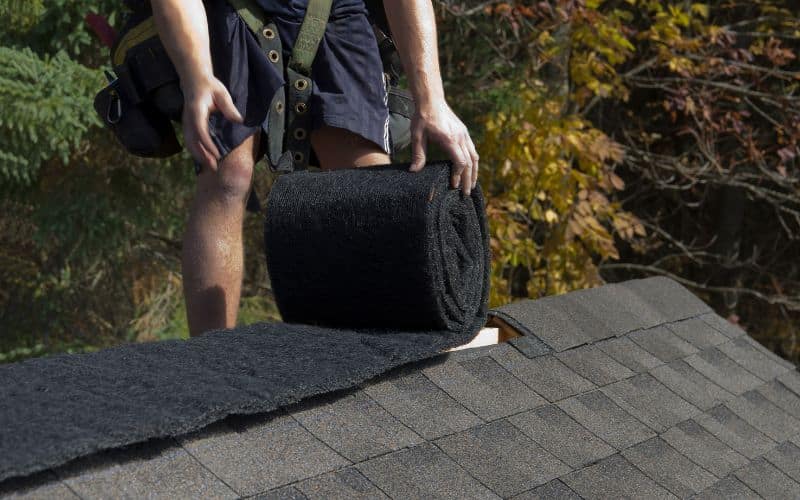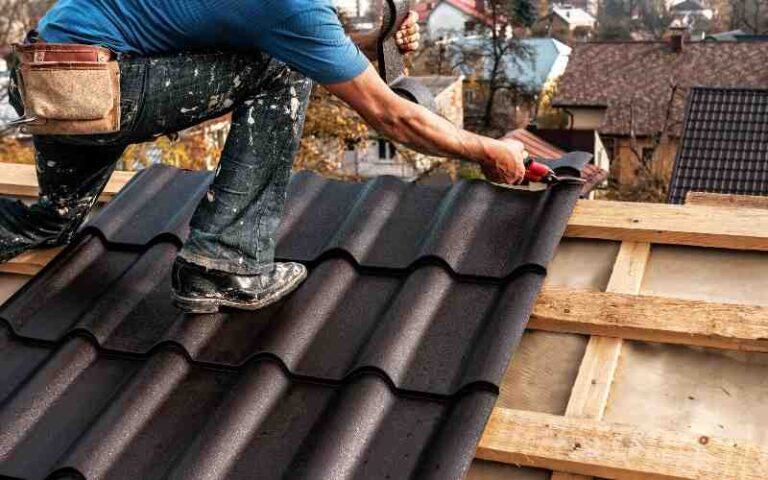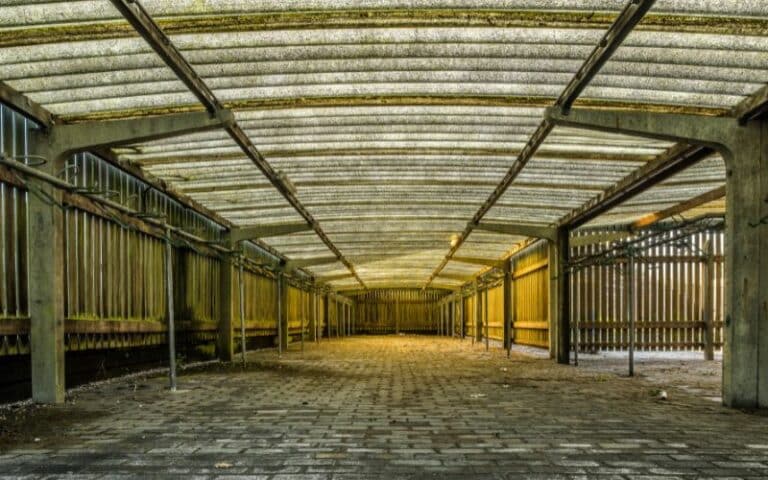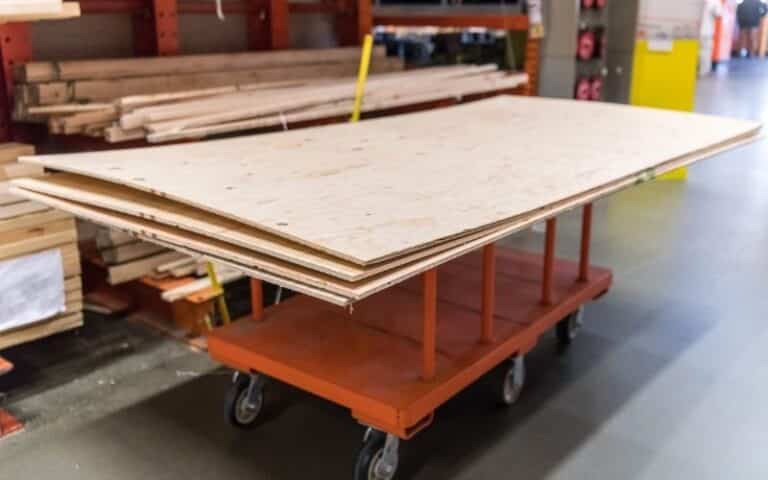Having Adequate ventilation in your home is a paramount responsibility to maintaining healthy breathing space in your home.
People that underestimate the importance of having ridge vents end up in poorly ventilated homes full of mold and bugs.
A sound ventilation system prolongs the life span of your roof and generally makes your house a healthy place to live.
Experts say ridge vents are one of the most efficient and cost-effective ventilation systems. It reduces cooling costs and protects the roof from damage.
A well-vented Attic should be about 125 – 130 degrees Fahrenheit on a good summer day.
Yes, a ridge vent can go all over the entire length of a roof. However, you can decide not to cut the ridge vents down to the edge but extend the vent caps from one end to another.
Ready for a Roofing Quiz?
How Long Should a Ridge Vent Be?

A ridge vent is a type of roof ventilation installed at the top of a sloped roof that allows hot, humid, and moist air to escape from your home.
It is made from aluminum materials. It is laid under the final layer of a shingle to create airflow across the roof. They also have decorative matching ridge caps that conceal the vent and blend into the top nicely.
A ridge vent can spread throughout the roof but ensure to leave a space of at least 4 inches from the edge.
On the ridge board, an open area of 2.0″ should be on both sides to allow trapped air to escape through the vent.
It is important to note that having a Ridge vent is a part of a whole. For it to function effectively, air must flow freely into the attic or roof through another channel.
#1. Exhaust Ventilation System
This is a ventilation system that moves hot air out of a building. You can install it on the roof or attic of a building.
Types of exhaust ventilation include ridge vents, off ridge vents, Box vents, roof turbines, solar-powered Attic vents, and cupola vents.
To achieve excellent ventilation in your home, it should be 50% exhaust vents and 50% intake vents. Exhaust vents are incomplete without intake ventilation.
#2. Intake Ventilation System
This is the opposite of the exhaust ventilation system. The system allows fresh cool air into the building through the roof.
It is installed on the eaves directly under the roof line. They are of various types, which include soffit ventilation.
#3. Soffit ventilation
Soffits vents are intake ventilation installed on the eaves directly on the roof. The vents are characterized by tiny holes allowing fresh air to pass through the attic.
They are mostly found on the roof line Soffit vents work well with gable vents or ridge vents to help increase airflow into the roof and attic.
It is an excellent way to improve ventilation and reduce energy costs.
How Far Should the Ridge Vent Be From the End Of the Roof?
Some roofing companies and manufacturers have online calculators and mobile apps to determine the length of a ridge vent. All vents should be spaced evenly by both the roof and side ends.
Should Ridge Vent Go End to End?
You can install a Ridge vent from one end to the other, but it is advised to stop a few meters away from the roof’s edge.
However, some areas have installation codes that work best according to the weather climate. Having a ridge vent on your roof has some benefits and difficulties.
#1. Pros
- A correctly installed ridge vent is not affected by the weather condition. A good ridge vent exhausts hot air freely without any blockage during summer and winter.
- A ridge vent improves indoor air quality in the home, reducing the risk of pollution-induced problems such as sinus infection, coughing, and sneezing.
- It protects the house from unwanted visitors such as bugs, rats, insects, squirrels, and other pests from getting into the home.
- It balances the movement of hot and cold air in the home, thereby regulating the temperature.
#2. Cons
- Water, moisture, or snow could enter the home during heavy rain.
- Sometimes, they don’t work optimally in the warm weather.
- Ridge vent Alone does not provide adequate ventilation for your home. However, it works well when another system brings fresh air in and drives hot air out.
How Do You Tell If Your Ridge Vent is Installed Properly?
To know if your ridge vent is installed correctly, from your soffit venting, take a temperature reading with an infrared thermometer to check the humidity level similarly, check the temperature of the ridge vent from the attic.
The difference between the temperature of the soffit and ridge vent should not be much different, where the soffit vent should be more incredible and the ridge vent hotter.
Another way to ascertain if you carefully fixed your ridge vent is to walk through the length of the roof, raise the ridge vent and check if it’s appropriately placed.
Furthermore, you can also check if some parts are loose. Without the vent, heat generated during the day is stored up, causing several damages such as:
#1. Vent Leakages
Leakage through the vent is an indication that your roof is not correctly fixed. Roof leakage is not caused by shingle caps but by a subpar installation.
This problem occurs when the fasteners are loose and cannot connect the vent to the roof.
When snow loosens the vent, snow can also get into the house. Check the end of the ridge vent to guarantee that they are robust and reliable.
#2. Attic Leakages
A damaged ridge vent can be an entry point for moisture into the house. Wind-blown rain can also enter through a poorly installed ridge vent.
When you check your ridge vent through the attic and notice water droplets, it means there’s an excess opening that allows water and moisture to pass through the ridge vent into the attic.
When this happens, the wooden sheathing is rotten, mold forming, and might eventually damage the entire roof.
Another cause of Attic leakage is not adding enough sealant on the fasteners when fixing the vents.
#3. Shingle Obstruction
This requires some technical expertise to detect this error. It mostly happens when a ridge vent is longer than the requirements.
Shingle obstruction is when you can see the underside of the roof shingle through the attic.
#4. Air Obstruction
Air blockage is another sign of a poorly installed ridge vent. When air isn’t coming into the soffit and going out of the ridge, we can say that the airflow has been obstructed.
When you take a close look, and you do not see air exhausting, it means there’s a blockage from the ridge vent. A well-vented ridge is easy to see in winter.
#5. Ice Damp
If you don’t have proper ventilation, stagnant ice dampens trapped on your rooftop, which can destroy the entirety of your property.
Ice dampness occurs when heat from the sun and heat from the attic melt snow from the roof. When the water from the snow runs through the roof’s edge, they refreeze and build up again.
This build-up is known as Ice dampness. Adequate ventilation helps the hot air escape immediately, so there won’t be any chance for the hot air to melt snow and ice on the roof.
Final Thought
If you’re thinking of spreading your ridge vent across your roof, you should.
In addition, when Installing your ridge vent, carefully follow the instructions of the manufacturer because failure to do so will result in the inappropriate installation of the ridge vent, which will cost even more to repair than the initial installation cost.






